Should you shower with your Apple Watch? Or any water resistant watch for that matter?
 Recently I stumbled upon an article from ScreenRant where they delve into whether or not it is safe to shower with your Apple Watch. Showering with your watch is a hot and steamy discussion within the watch community. On Clubhouse, for example, I have encountered collectors who are vehement advocates for both sides. Some like myself would never dare to unless absolutely necessary, while others can’t imagine taking a shower without their holy trinity sports pieces. To clear the air a bit on the issue, let’s dig into water-resistant watches and the potential dangers of showering with them. 30 metres and below… The original Apple Watch was not billed as a swimmable watch, that specification did not arrive until the Series 2. The first Apple Watch had an IPX7 water resistance rating, which meant it theoretically could survive being submerged in 1 metre of water for 30 minutes. It was not recommended to shower with the watch at all. Most splash resistant watches are 30 metres water-resistant, and even at that depth rating are not recommended for any water activity beyond washing your hands. The only exception to that rule that I am familiar with is the F.P Journe Elegante,…
Recently I stumbled upon an article from ScreenRant where they delve into whether or not it is safe to shower with your Apple Watch. Showering with your watch is a hot and steamy discussion within the watch community. On Clubhouse, for example, I have encountered collectors who are vehement advocates for both sides. Some like myself would never dare to unless absolutely necessary, while others can’t imagine taking a shower without their holy trinity sports pieces. To clear the air a bit on the issue, let’s dig into water-resistant watches and the potential dangers of showering with them. 30 metres and below… The original Apple Watch was not billed as a swimmable watch, that specification did not arrive until the Series 2. The first Apple Watch had an IPX7 water resistance rating, which meant it theoretically could survive being submerged in 1 metre of water for 30 minutes. It was not recommended to shower with the watch at all. Most splash resistant watches are 30 metres water-resistant, and even at that depth rating are not recommended for any water activity beyond washing your hands. The only exception to that rule that I am familiar with is the F.P Journe Elegante,…
The post Should you shower with your Apple Watch? Or any water resistant watch for that matter? appeared first on Time and Tide Watches.
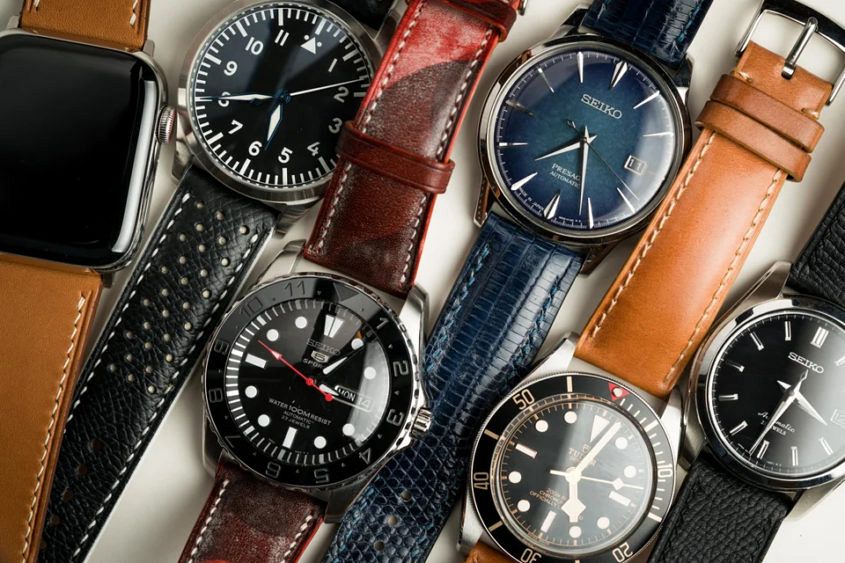 The watch community has its own cultural rhetoric teeming with insider slang that never registers to the mainstream ear. It all stems from a greater engagement with watches and, as you go down the rabbit hole and discover all of the intricacies of watches, you begin to need specific terms for purposes of clarification. One common phrase collectors often utilise is “strap monster”. It is thrown around a lot, so we wanted to take a moment to break down what it means for those who aren’t familiar with it, why it is beneficial to own a strap monster in your collection and suggest a few references that we believe truly fit the bill. What is a “strap monster”? A strap monster is a chameleon of sorts. It is a watch that is ripe for seemingly limitless strap pairings that work well with the watch. Strap monsters, typically have more neutral toned dials – such as, black, white, grey or blue – and lug widths that cater to strap sizes most commonly produced (18mm, 20mm, 22mm). Often you will see a watch release that in its factory configuration will attract inquiry at points of sale. But, for those who love to…
The watch community has its own cultural rhetoric teeming with insider slang that never registers to the mainstream ear. It all stems from a greater engagement with watches and, as you go down the rabbit hole and discover all of the intricacies of watches, you begin to need specific terms for purposes of clarification. One common phrase collectors often utilise is “strap monster”. It is thrown around a lot, so we wanted to take a moment to break down what it means for those who aren’t familiar with it, why it is beneficial to own a strap monster in your collection and suggest a few references that we believe truly fit the bill. What is a “strap monster”? A strap monster is a chameleon of sorts. It is a watch that is ripe for seemingly limitless strap pairings that work well with the watch. Strap monsters, typically have more neutral toned dials – such as, black, white, grey or blue – and lug widths that cater to strap sizes most commonly produced (18mm, 20mm, 22mm). Often you will see a watch release that in its factory configuration will attract inquiry at points of sale. But, for those who love to…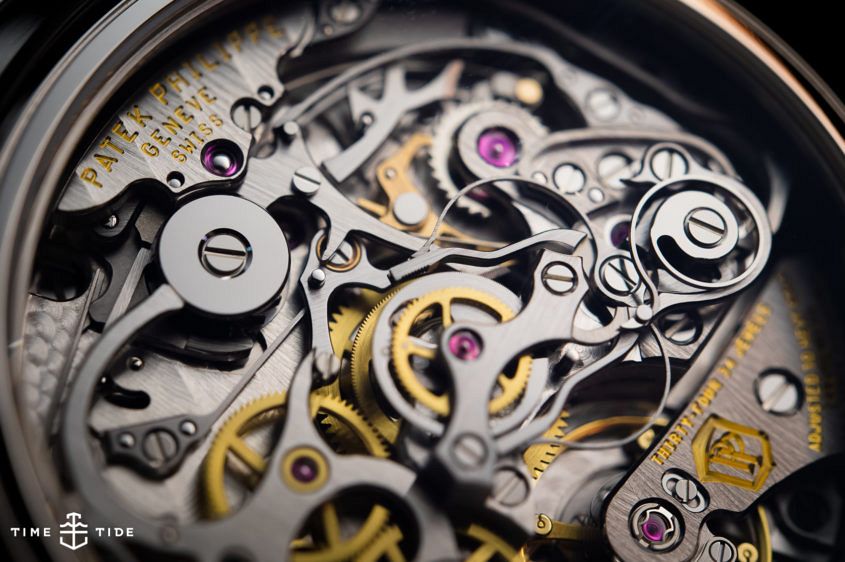 Editor’s note: Sandra wrote this lovely piece at the start of the year, and it speaks to one of the biggest movements (if you’ll pardon the pun) in the watch industry over the last few decades – the rise of the in-house movement. I won’t steal Sandra’s thunder, but suffice to say it’s worth a read. If you’re considering buying a new watch, one of the least important questions you should ask is: “Does it have an in-house movement?” To be blunt: the mere existence of an in-house movement does not necessarily equate to a better watch. So why do we see the in-house claim being made by so many watch brands? Why do they use it like a badge of honour, a mark of prestige and exclusivity, a (strongly implied) guarantee of superior quality – and a reason for charging a higher price? Let’s start with what the term actually means. Like many words that have been hijacked by the luxury marketing community and rendered meaningless through misuse and overuse, “in-house” has been reduced to little more than jargon – and has bamboozled watch buyers in the process. In its true sense, an in-house movement’s components must all (screws,…
Editor’s note: Sandra wrote this lovely piece at the start of the year, and it speaks to one of the biggest movements (if you’ll pardon the pun) in the watch industry over the last few decades – the rise of the in-house movement. I won’t steal Sandra’s thunder, but suffice to say it’s worth a read. If you’re considering buying a new watch, one of the least important questions you should ask is: “Does it have an in-house movement?” To be blunt: the mere existence of an in-house movement does not necessarily equate to a better watch. So why do we see the in-house claim being made by so many watch brands? Why do they use it like a badge of honour, a mark of prestige and exclusivity, a (strongly implied) guarantee of superior quality – and a reason for charging a higher price? Let’s start with what the term actually means. Like many words that have been hijacked by the luxury marketing community and rendered meaningless through misuse and overuse, “in-house” has been reduced to little more than jargon – and has bamboozled watch buyers in the process. In its true sense, an in-house movement’s components must all (screws,…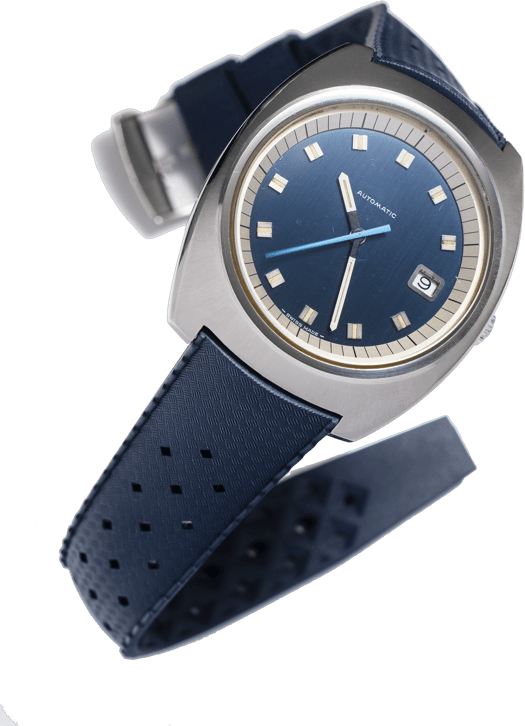 There’s a lot to like about a rubber strap — especially if you live somewhere hot, wet or humid. The natural material is exceptionally hard-wearing, and comfortable to boot. The only issue is that in the past there’s been a perception that rubber is a strictly utilitarian affair and, as such, quality is of a lesser concern. The game has changed on that front, with brands like Hublot, Richard Mille and even Patek Philippe showing us what premium rubber looks like. But what if you’re after a solid aftermarket option? Well, we’ve got your back with these five high-end rubber strap options. ISOfrane rubber straps One of the more distinctive offerings on this list, if you’re a dive watch aficionado there’s a good chance you know ISOfrane already — these professionally oriented straps have distinctive large holes and an angled end. The company dates back to the ’60s and uses a compound called isoprene. And while the look isn’t everyone’s cup of tea (there are four more entries on the list, so don’t fret), the quality is very much there. $109 – $149 USD. Everest rubber straps Everest’s proposition is quite niche, but also somewhat genius. They’ve built their brand…
There’s a lot to like about a rubber strap — especially if you live somewhere hot, wet or humid. The natural material is exceptionally hard-wearing, and comfortable to boot. The only issue is that in the past there’s been a perception that rubber is a strictly utilitarian affair and, as such, quality is of a lesser concern. The game has changed on that front, with brands like Hublot, Richard Mille and even Patek Philippe showing us what premium rubber looks like. But what if you’re after a solid aftermarket option? Well, we’ve got your back with these five high-end rubber strap options. ISOfrane rubber straps One of the more distinctive offerings on this list, if you’re a dive watch aficionado there’s a good chance you know ISOfrane already — these professionally oriented straps have distinctive large holes and an angled end. The company dates back to the ’60s and uses a compound called isoprene. And while the look isn’t everyone’s cup of tea (there are four more entries on the list, so don’t fret), the quality is very much there. $109 – $149 USD. Everest rubber straps Everest’s proposition is quite niche, but also somewhat genius. They’ve built their brand…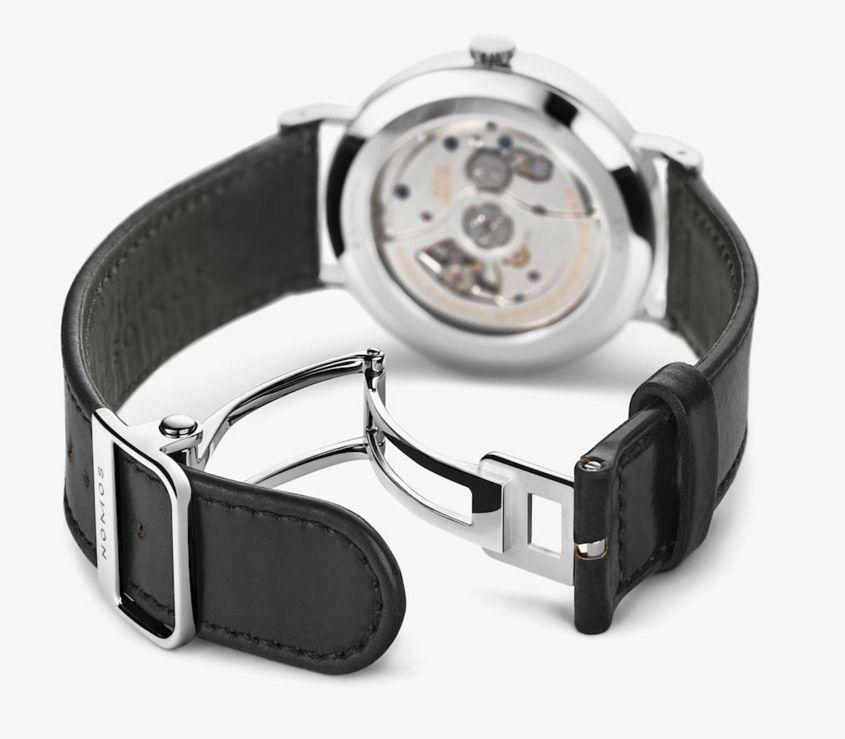 In the latest instalment of our glossary series (you can see all our educational style content here), we tackle one of the most overlooked (and most important) elements of a watch. The bit that attached it to your wrist – buckles and clasps in all their forms … The tang buckle, also known as the pin or ardillon buckle The most common type of buckle in the watch industry. The Tang/Pin/Ardillon buckle looks very much like a traditional belt buckle. The tail end of the strap is threaded through the loop of the buckle, and held in place by the pin (or tang) poking through a hole and resting in a recess in the loop. The advantage of these buckles is that they are cheap to produce. The disadvantage for the customer is the constant flexing and fastening of the strap means the strap wears out a lot faster. The deployant clasp Often called a deployment clasp, the deployant was invented by Louis Cartier (the grandson of the founder) in 1910. The name comes from the French word déployant, which means to unfold, extend, or unfurl. The deployant extends the life of straps because once it is fitted to…
In the latest instalment of our glossary series (you can see all our educational style content here), we tackle one of the most overlooked (and most important) elements of a watch. The bit that attached it to your wrist – buckles and clasps in all their forms … The tang buckle, also known as the pin or ardillon buckle The most common type of buckle in the watch industry. The Tang/Pin/Ardillon buckle looks very much like a traditional belt buckle. The tail end of the strap is threaded through the loop of the buckle, and held in place by the pin (or tang) poking through a hole and resting in a recess in the loop. The advantage of these buckles is that they are cheap to produce. The disadvantage for the customer is the constant flexing and fastening of the strap means the strap wears out a lot faster. The deployant clasp Often called a deployment clasp, the deployant was invented by Louis Cartier (the grandson of the founder) in 1910. The name comes from the French word déployant, which means to unfold, extend, or unfurl. The deployant extends the life of straps because once it is fitted to…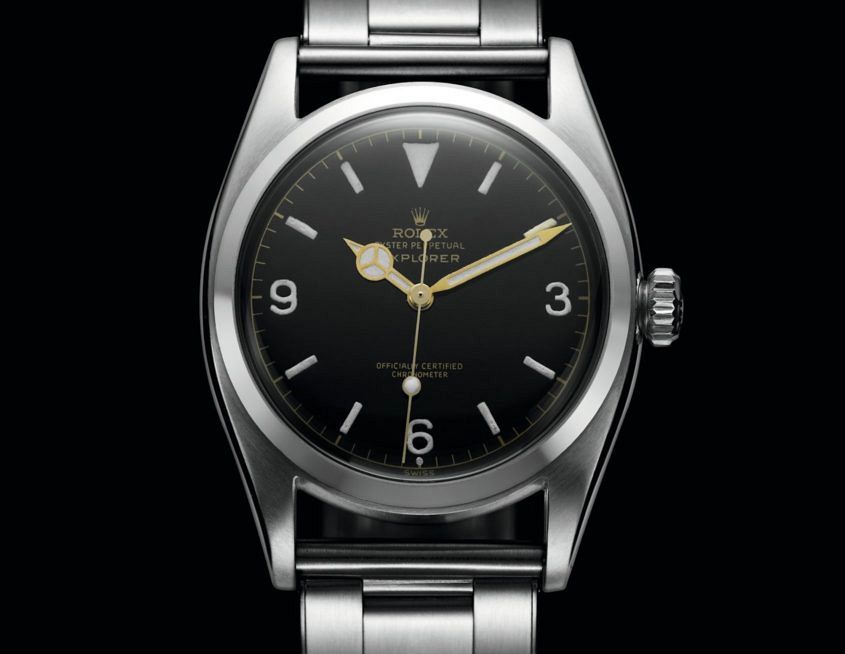 There are many potential pitfalls you could encounter when buying a luxury watch. Especially if it’s your first time. The desire to make a seasoned choice right off the bat is understandable, but it’s important you don’t put too much pressure on yourself to get it exactly right first time. In fact, making mistakes is part of the fun, and definitely part of the learning process. It certainly doesn’t feel like a barrel of laughs when you make a purchase that turns out to be a total waste of money, but you’ll never make that mistake again. If you find yourself really nervous about buying, owning and, crucially, wearing a luxury watch for the first time, one of the avenues you could explore to make the experience a little less stressful is the vintage route. Buying pre-owned (or pre-loved as we are wont to say these days) has a few advantages. Firstly, in almost all instances, it is cheaper. That should be a load off your mind when the relatively expensive item on your wrist threatens to catch itself on every door, bannister, and brick wall as you get used to it being there over the first few days. Secondly,…
There are many potential pitfalls you could encounter when buying a luxury watch. Especially if it’s your first time. The desire to make a seasoned choice right off the bat is understandable, but it’s important you don’t put too much pressure on yourself to get it exactly right first time. In fact, making mistakes is part of the fun, and definitely part of the learning process. It certainly doesn’t feel like a barrel of laughs when you make a purchase that turns out to be a total waste of money, but you’ll never make that mistake again. If you find yourself really nervous about buying, owning and, crucially, wearing a luxury watch for the first time, one of the avenues you could explore to make the experience a little less stressful is the vintage route. Buying pre-owned (or pre-loved as we are wont to say these days) has a few advantages. Firstly, in almost all instances, it is cheaper. That should be a load off your mind when the relatively expensive item on your wrist threatens to catch itself on every door, bannister, and brick wall as you get used to it being there over the first few days. Secondly,…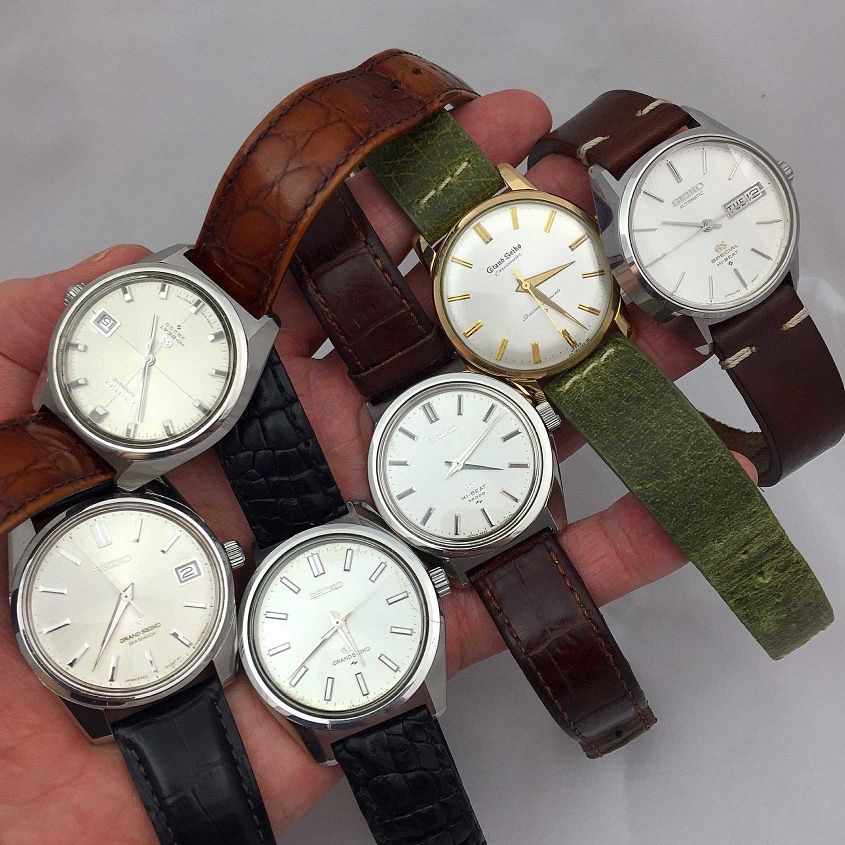 Collecting watches is a lot of fun. At least, it should be. If it ever stops being fun, I’d assume that’s because you got into it for the wrong reasons (to make a quick buck, most likely). If you’re about to take the plunge into this massively rewarding hobby, but you’re doing so because you think it will make you rich, don’t. If you started (or are about to start) collecting watches because you love them, welcome to the club. Everyone’s watch journey is different. They can depend on means and opportunities, or tastes and trends, or any number of factors that make your story your own. One thing is highly likely, though. You will make mistakes, missteps, and about-turns as you tread this path. Sometimes these errors in judgement are far from that at the time. It’s very possible that certain watches will instantly become an itch you just have to scratch, and scratch it you should (even if you feel like a fool for it a couple of years down the line). I’m afraid we can’t help you avoid that, but we do have a little bit of advice regarding some common questions we’ve been hearing recently: How…
Collecting watches is a lot of fun. At least, it should be. If it ever stops being fun, I’d assume that’s because you got into it for the wrong reasons (to make a quick buck, most likely). If you’re about to take the plunge into this massively rewarding hobby, but you’re doing so because you think it will make you rich, don’t. If you started (or are about to start) collecting watches because you love them, welcome to the club. Everyone’s watch journey is different. They can depend on means and opportunities, or tastes and trends, or any number of factors that make your story your own. One thing is highly likely, though. You will make mistakes, missteps, and about-turns as you tread this path. Sometimes these errors in judgement are far from that at the time. It’s very possible that certain watches will instantly become an itch you just have to scratch, and scratch it you should (even if you feel like a fool for it a couple of years down the line). I’m afraid we can’t help you avoid that, but we do have a little bit of advice regarding some common questions we’ve been hearing recently: How…